Art World
Meet the miart Early Birds: 10 Fairgoers Share Their Highlights of Milan’s International Art Fair
We asked collectors, curators, and an artist for their highlights of the VIP day of the international art fair where it's good to talk.
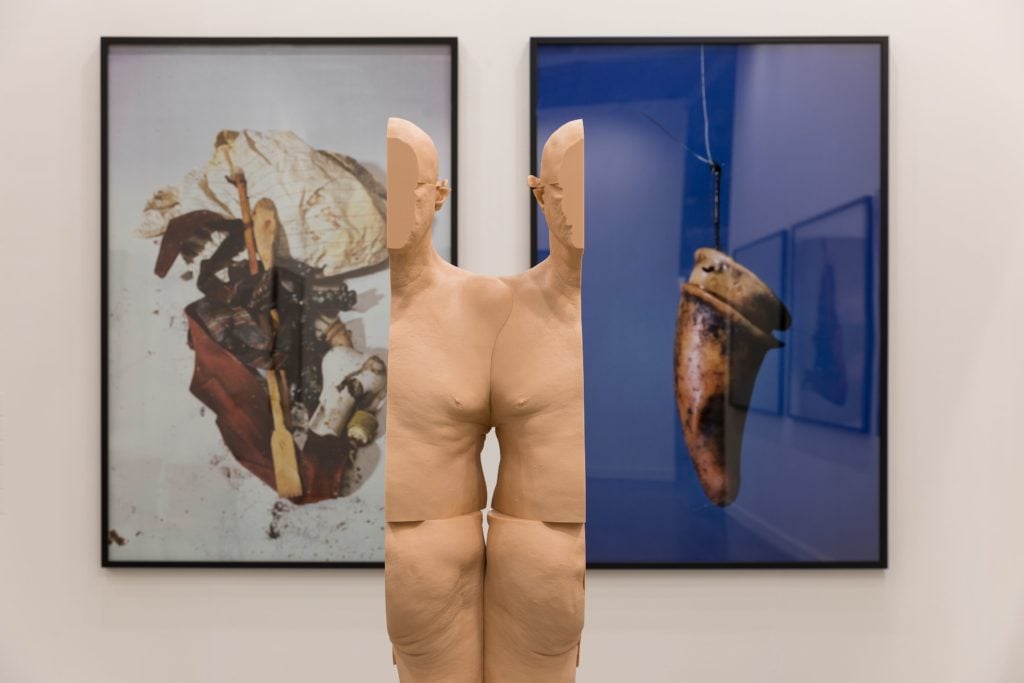
We asked collectors, curators, and an artist for their highlights of the VIP day of the international art fair where it's good to talk.

Naomi Rea

Milan’s international art fair, miart, opens its doors to the public today, April 5, but VIP collectors and curators got a sneak peak yesterday at the art on show on the booths of the fair’s 185 participating galleries.
There has been much talk about the host of blue chip galleries that are making an entry to the historically local and middle-market fair. Among these is Hauser & Wirth, which is making a memorable debut with a solo presentation of Paul McCarthy works. Co-founder Iwan Wirth says the time was right to come to Milan, which has become an interesting hub for artists and institutions, as well as an ideal meeting place for swathes of enthusiastic Italian collectors.
“It’s a sexy city now,” Wirth jokes. “There is also a highly informed and curious international audience, and people seem to have an attention span longer than just saying the name of the artist.” McCarthy made sense because the artist has had a strong following in Italy for 40 years, and Milan is a great place to bring him back, after a popular show, “Pig Island” at the Fondazione Nicola Trussardi in 2010.
The 2019 edition of miart was off to a good start for the Italian gallery Francesco Pantaleone Arte Contemporanea, which sold works within hours of fair opening. Works sold included two editions of a new sculpture by Ignazio Mortellaro, Hunter/Hunted (2019). Gallery director Francesco Pantaleone says that slow and steady is the mantra at miart. “It’s not so fast, but you sell every day,” Pantaleone says.
Italians famously love to talk, and the smaller-scale fair leaves more time for schmoozing, so we seized the opportunity to do just that, and caught up with seven fair-goers to gauge what they make of the fair.
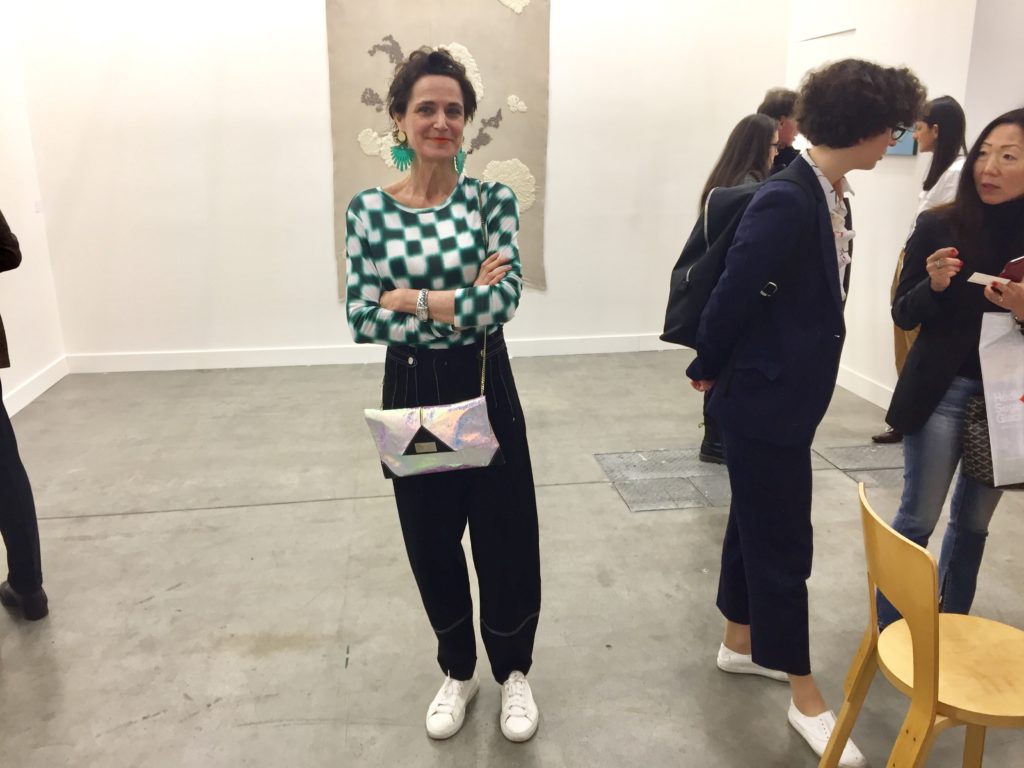
Letizia Ragaglia. Photo by Naomi Rea.
What do you do? I’m the director of a museum of Modern and contemporary art based in Bozen in Northern Italy. It’s called Museion.
Are you shopping for works for Museion at miart? Unfortunately not. For one thing, we don’t have the budget, and for another, we only acquire works out of our shows.
So you’re just looking? Miart is certainly a source of inspiration, but it’s also a great meeting place. It’s amazing for collectors, gallerists, artists, curators, and everyone to meet. I haven’t seen it all yet because I make one step and I am stopped by someone. I look with a lot of curiosity to the younger sections, not always to discover, but really to confirm the quality of younger artists I knew already. The “generations” section is always well curated and curious, too.
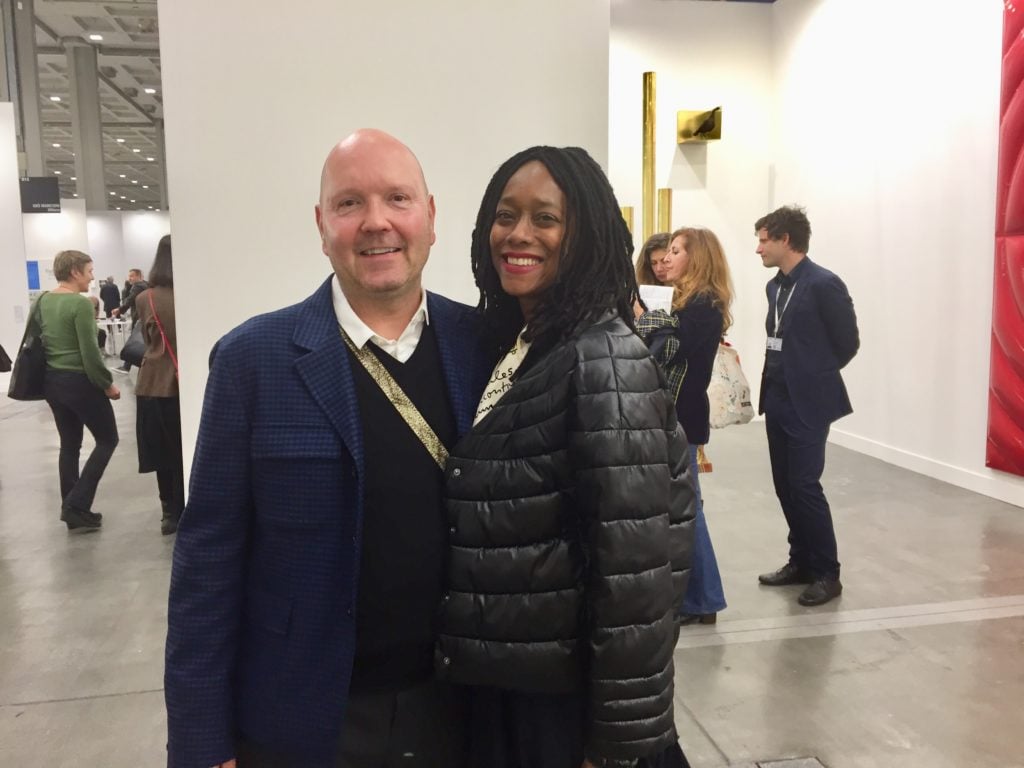
Alysen and Thomas Vasold. Photo by Naomi Rea.
Is this your first time at miart? Alysen: Yes. We are collectors from Berlin and we have a friend who is doing the VIP who invited us. It’s a really nice show.
Is there anything in particular that has stood out to you? Thomas: There was this great work by Otto Berselli at Luciano Colantonio. [It’s] a table made from asphalt that you can assemble any which way you want.
What is your collection back home like? Alysen: It’s contemporary, but with a mix. Thomas: I like beautiful things. Plus ugly things, but ugly things are sometimes beautiful.
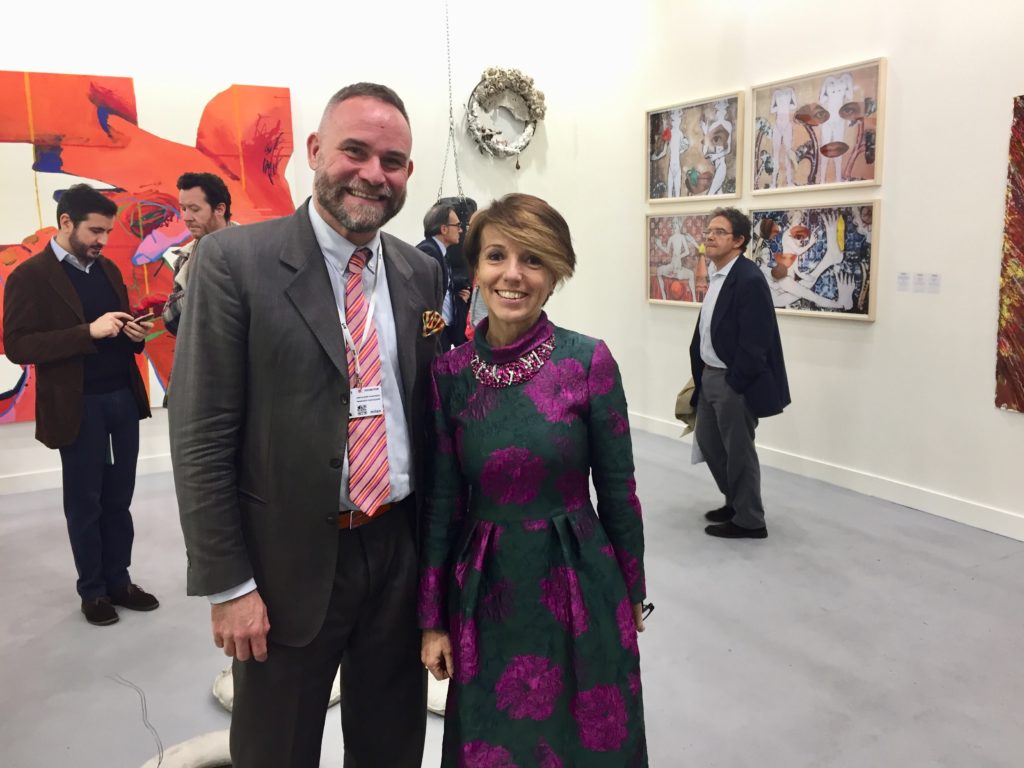
Francesco Pantaleone and Patrizia Sandretto Re Rebaudengo. Photo by Naomi Rea.
It wouldn’t be a fair in Italy without bumping into you. What do you like about miart this year? It’s a really good quality fair. I love the “generations” section, where they put two different generations of artists in dialogue with each other. There’s an amazing presentation of Patrizio di Massimo with the German-American photographer Horst P. Horst. There are so many interesting discourses here, and so many people to meet. It’s really great work done by [miart’s artistic director] Alessandro Rabottini to put together two artists you wouldn’t expect, it shows a really good quality of curation.
What are you looking at here? This is Liliana Moro, who is one of the three artists who will be showing at the Italian pavilion in Venice this year. Francesco Pantelone: It’s hard to summarize Liliana’s practice, she works with lots of different materials, and often her work is shown on the floor, but it’s something that’s very hard to put words to.
Do you know what she will be showing in Venice? Francesco: Of course I do, we’ve represented her for about 10 years now, but I don’t think I’m supposed to talk about it. All I can say is that she will be showing a selection of older works and one new work, all very heterogeneous works.
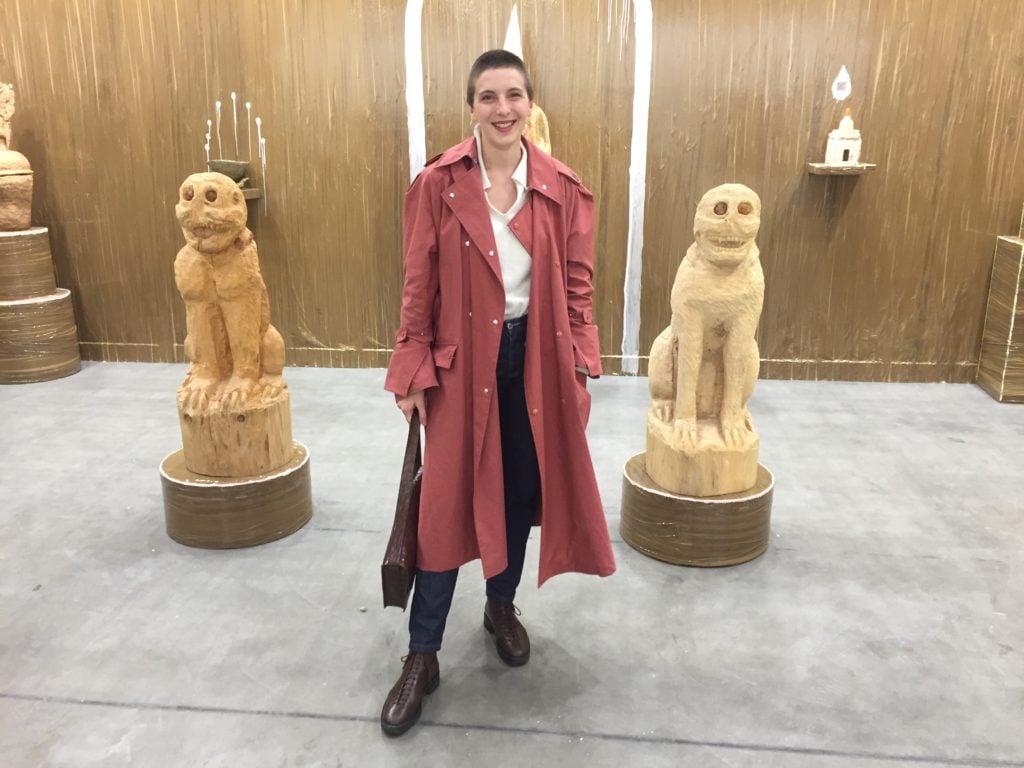
Diana Pfammatter. Photo by Naomi Rea.
Where are you from? I’m originally from Switzerland but I live in Frankfurt in Germany now.
Is this your first time in miart? Yes, but I’ve been to other fairs. I know Art Basel, and I’ve been to Frieze. My boyfriend works as a curator in contemporary art, so I like to take a few days off and join him sometimes. It’s a holiday for me now but he is working, so it’s business for him.
What do you do? I’m a photographer.
Do you have something to do with art? Well, sort of. I’m not an art photographer though, I do mostly commercial stuff. But I do have some artist friends and sometimes it mixes in, so my work is linked to art but I don’t make art.
What has stood out to you so far at miart? I’ve only been here for about 10 minutes but so far I really liked the Lucas Hirsch booth in the emergent section, it’s a Düsseldorf gallery, and Felix Gaudlitz. They’re from Vienna. I also really quite like this booth [Z2o Sara Zanin]. The funny thing is that often when I know gallerists, it’s easier to make a connection to the art. A gallerist who is happy to explain and walk you through is really helpful for that. But I pretty much decide what I like on a visual level, not so much a curatorial one. Anything that prompts a reaction, that makes me curious.
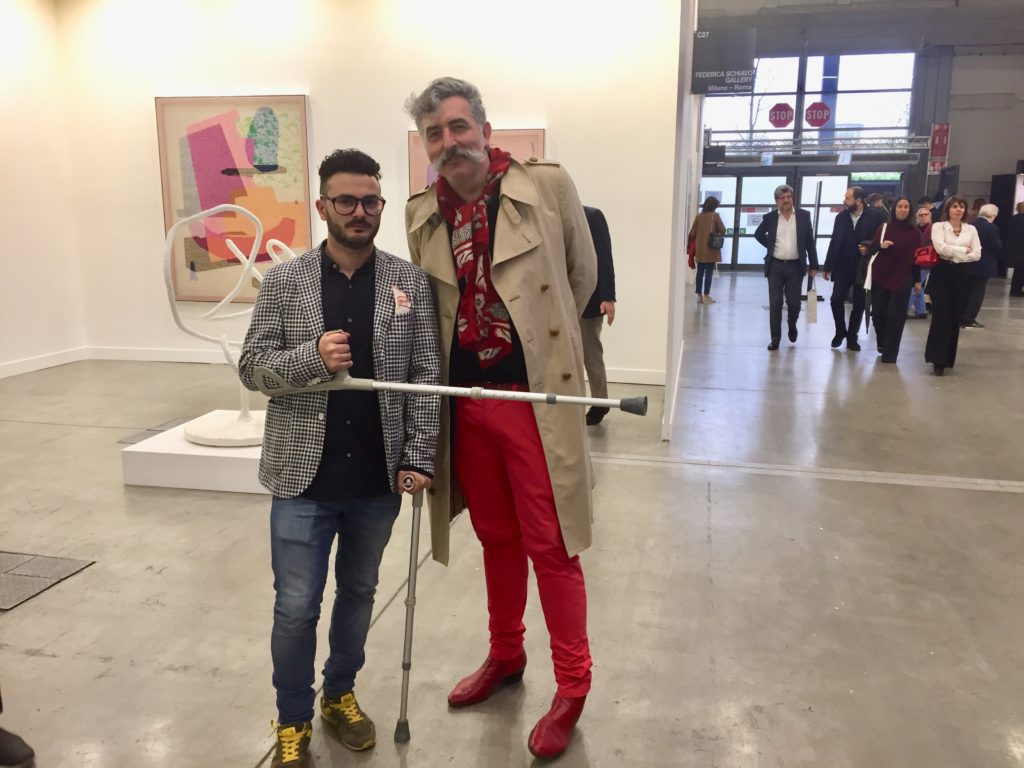
Luca Bochicchio and Andrea Salvatori. Photo by Naomi Rea.
What do you guys do? Luca: I’m an art critic, curator, and artistic director at the Asger Jorn House Museum in Albissola. Do you know Asger Jorn? He’s a Danish artist. And Andrea here is an artist too, a sculptor.
What’s the best thing you’ve seen so far at the fair? Luca: I really liked the Paul McCarthy presentation at Hauser & Wirth’s booth, it’s something special. And the artist showing at Z2o Sara Zanin, Evgeny Antufiev, you’ll see the booth, it’s completely brown.
It must be hard work navigating a busy art fair on crutches. What happened? This morning I turned my ankle on the subway. I had to go to the hospital, so I’d like to thank all the wonderful doctors who made my being here today possible.
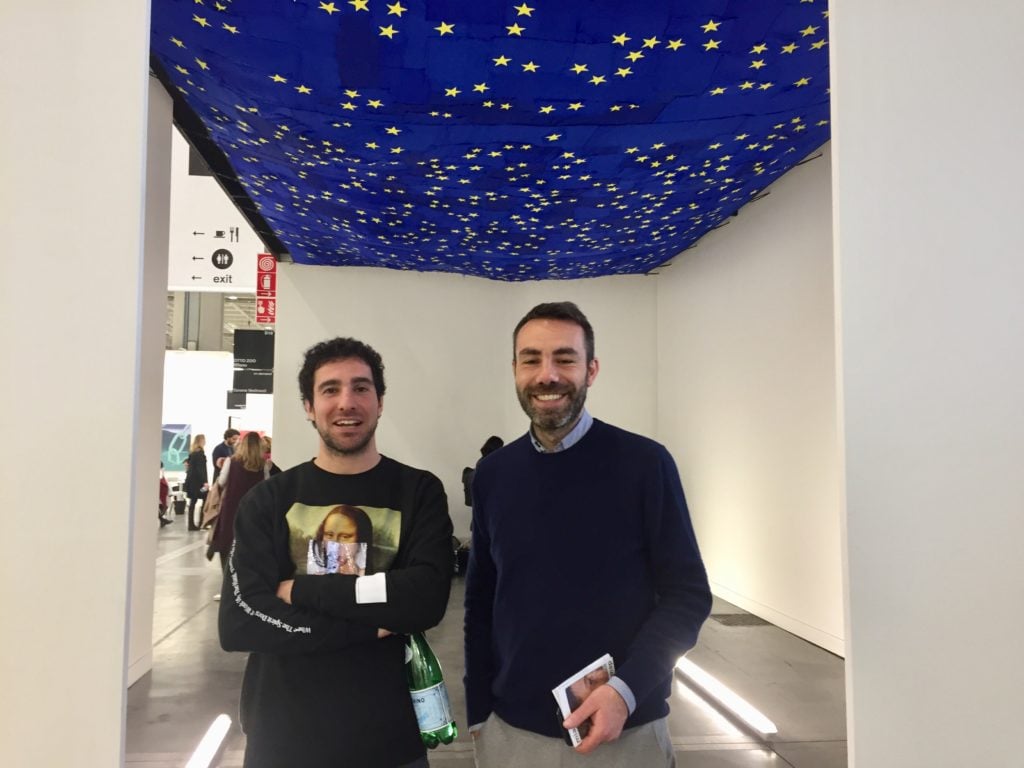
Lorenzo Pingitore and Gian. Photo by Naomi Rea.
Are you from Milan? Gian: No, we’ve come from Turin, it’s a tradition to come to miart, but we’re not collectors.
Have you seen anything you like so far? Gian: We’ve just arrived but walking around, I’ve been focusing on photography, I liked the Gabriele Basilico works in Enrico Astuni gallery. And I really appreciate the new proposals in the emergent sector, the galleries from Bucharest [gaep/Eastwards Prospectus] and Budapest [Horizont Galeria]. I also really liked the 1960s Maria Lai works in the “decades” section. She’s an author [and textile artist] who died in 2013, but her work has been recently rediscovered by the museum director Lorenzo Giusti. He staged one of the first exhibitions of her works in Bergamo. I really appreciate it.
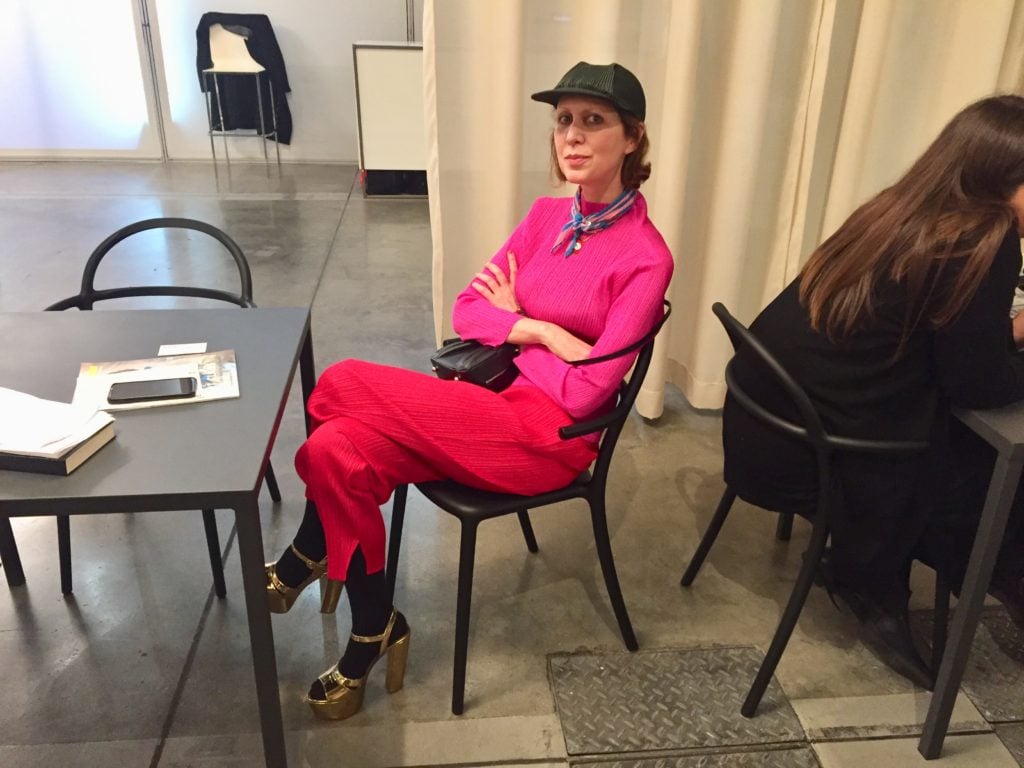
Valeria Napoleone. Photo by Naomi Rea.
How long have you been here? I’ve been here since 11 a.m. [about six hours]. I come to miart every year. I’ve been on the honorary committee since its very beginning when Alessandro Rabottini and [fellow curator] Vincenzo de Bellis launched the new miart, and it’s been a joy to see it going from strength to strength.
I don’t like big fairs. I don’t function well in them. I prefer small fairs, and miart is really the perfect size. It’s a targeted fair with a targeted offer. The level of the artists are really emerging and mid-career, it’s not all about the so-called “blue chip” things. At smaller fairs it’s also possible to talk to people and catch up, and discuss the work instead of this high pressure environment.
What are some of the best presentations you’ve seen so far? I always find incredible new artists and I love the “generations” section, it’s my favorite. It tells you how well managed and curated the fair is. The design section has also come along nicely, it’s improved a lot since the beginning. It’s well integrated. It’s not big but they picked great galleries.
The emergent section is also very interesting, I always find something for me as well. I really liked this younger artist from Iran, Arghavan Khosravi, at a Brussels gallery, Stems. In recent years we’ve lost the appreciation of mastery of technique, which is really the case with her paintings. Whenever I find a new artist at fairs I’m really very excited. It’s not easy to be surprised nowadays, or to be impressed either.
Have you acquired anything for your collection today? I haven’t acquired anything for my collection, yet. About 60 to 70 percent of the time, I don’t buy at art fairs. I mainly buy artists I know from galleries I know. At a fair, I’m excited to encounter new work but I need to learn more, and I need time to think it over. I’m not one for rash decisions. Also, too many galleries do too many fairs and ask artists to make work specifically for the fair, and I don’t want to buy art that was made for a fair. There needs to be the right context, and I buy from galleries with integrity, not production machines.
What kind of works do you collect? My collection is very focused on female, contemporary, living artists, and that is the only criteria applied. I try to make it global, not just Europe and America, and any medium. It’s a very personal collection: whatever I feel connected to, respond to, and practices that are important and relevant to the contemporary landscape.
It’s not about helping the “poor women artists” who would never have made it, but the collection has been focused on female artists since the first piece. There’s a lot of talent that was dismissed or silenced, a lot of unseen stuff, but my collection is about quality and nothing else. I’m not doing a favor to women artists, I’m doing a favor to humankind by shining a light on these incredible practices.